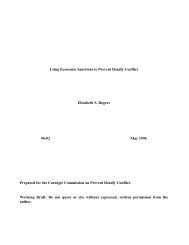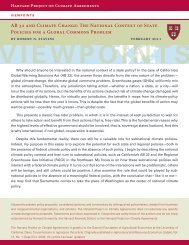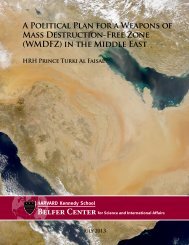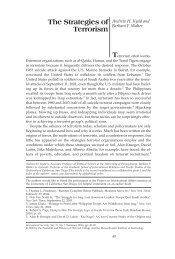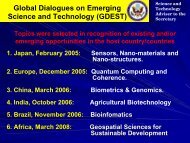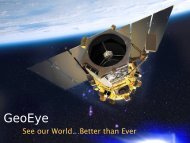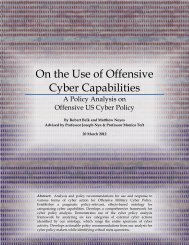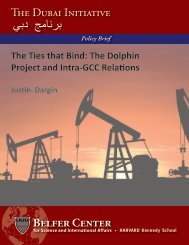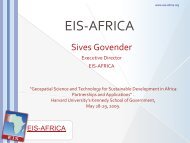Plutonium Mountain - Belfer Center for Science and International ...
Plutonium Mountain - Belfer Center for Science and International ...
Plutonium Mountain - Belfer Center for Science and International ...
- No tags were found...
You also want an ePaper? Increase the reach of your titles
YUMPU automatically turns print PDFs into web optimized ePapers that Google loves.
Source: Siegfried Hecker<br />
Siegfried S. Hecker (right) <strong>and</strong> James W. Toevs (left) from Los Alamos National<br />
Laboratory on the Kazakh steppe in 1998.<br />
‘Completely Open to Whomever Wants to Come’<br />
Hecker drafted a message to the United States Embassy in Kazakhstan, alerting them to the potential<br />
dangers <strong>and</strong> his desire to investigate. Describing the plutonium, he said, “This material<br />
would be easily accessible to recover by a group interested in obtaining weapons materials <strong>for</strong><br />
nuclear proliferation.” If recovered, he estimated, there might be enough plutonium to make five<br />
or 10 nuclear bombs. 31 “The potential amount of material available at this site is approximately<br />
one third to one half of the amount recovered from Operation Sapphire….Individuals could easily<br />
access the area <strong>and</strong> ‘mine’ the material without being detected.” 32 Hecker also invited Russian<br />
officials from the nuclear weapons laboratory at Arzamas-16 to join him in Kazakhstan, but they<br />
declined, at least initially. 33<br />
Hecker <strong>and</strong> two other Los Alamos specialists went to Kazakhstan <strong>for</strong> nine days in April, 1998. 34<br />
When he arrived at Semipalatinsk, Hecker found a lone, meager guard gate <strong>and</strong> no guards. He<br />
had been warned by Kadyrzhanov about the metal scavengers, but nothing prepared him <strong>for</strong><br />
what he witnessed on the scene. “When I went out there, I was expecting to see guys on camels<br />
pulling on copper cables,” he recalled. Instead, Hecker saw miles of trenches in the brown, dry<br />
steppe that could only have been dug by powerful excavating machines.<br />
31<br />
The actual amount of recoverable material underground at Semipalatinsk remains a matter of dispute. The official U.S. Government<br />
position is “approximately a dozen bombs worth of material,” but this estimate includes large uncertainty about the state<br />
of the material, which would determine how much plutonium could actually be recovered <strong>and</strong> turned into a <strong>for</strong>m suitable <strong>for</strong><br />
weapons.<br />
32<br />
“Possible Source of High-Grade Uranium <strong>and</strong> <strong>Plutonium</strong> Weapons Materials,” draft note to U.S. Embassy, Kazakhstan.<br />
33<br />
Hecker’s letter to Radi Ilkaev, director of VNIIEF, or Arzamas-16, March 27, 1998. Ilkaev responded on April 7, 1998, saying<br />
he could not come because he could not obtain permission rapidly enough from the ministry in Moscow, where the leadership had<br />
changed.<br />
34<br />
The other two specialists were John R. Phillips <strong>and</strong> James W. Toevs. The trip took place April 16-25, 1998. This account is<br />
based on Hecker’s trip report <strong>and</strong> h<strong>and</strong>written notes during the visit, as well as photographs <strong>and</strong> his recollections in the interview.<br />
12<br />
<strong>Plutonium</strong> <strong>Mountain</strong>: Inside the 17-year mission to secure a dangerous legacy of Soviet nuclear testing



